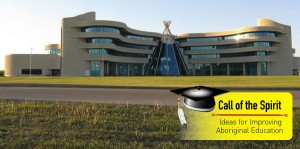Last month I wrote a post on the Urban Thunderbirds/Ravens in a Material World exhibit at the Art Gallery of Greater Victoria. The exhibit, which continues until January 12, 2014, features work by four contemporary indigenous artists from the Northwest, and as the title of the exhibit indicates, many of the works exhibited wrestle with notions of Aboriginal identity in a modern context. One of the events sponsored by the gallery as part of the exhibit that I did not discuss was a panel discussion with three artists (one of whom helped to curate the exhibit), about the factors that influence their work. Xenaleken: First Nations Artist Forum, took place at the gallery on November 9, and discussion centred on the topic of decolonization and the arts.
A search through the Web would indicate that the topic of this particular forum did not emerge out of isolation. The concept of decolonization – and specifically the role of the arts as part of this discourse – seems to have picked up a great deal of traction in the past few years. In 2011, The Ottawa Art Gallery curated an exhibit titled “Decolonize Me,” featuring six Aboriginal artists “whose works challenge, interrogate and reveal Canada’s long history of colonization in daring and innovative ways.” The artists in the exhibit hoped to shed light on how colonization came to affect both Aboriginal and settler identity and how this discourse continues to shape how both continue to view themselves and each other.
In 2012, FUSE magazine began a series of issues focusing on the States of Postcoloniality, with many of the articles focusing on the theoretical and aesthetic principles that informed decolonial thought and art. The series was published in collaboration with e_fagia, an organization of artists and writers based in Toronto, that sponsored the Symposium on Decolonial Aesthetics from the Americas in Toronto this past October. As the title of the symposium suggests, artists and works were featured from North, Central and South America. The diversity of works, approaches and perspectives provided a unique opportunity to consider the plurality of decolonial thought and discourse as represented in the arts. This concept is something that I presume the journal Decolonization: Indigeneity, Education & Society hopes to develop in an upcoming issue, which is currently accepting submissions for papers (the deadline is December 6, 2014). The questions that the journal hopes its contributors will consider provide insight into how the dialogue surrounding decolonization and the role of the arts might unfold:
– What are the connections and relationships between art, activism, resurgence, and resistance?
– What is the role of cultural production in decolonization? (**and/or How might art contribute to the revitalization of Indigenous nationhood?)
– How can art be used to disrupt normative orders and political status quo?
– How is Indigenous artistic creation connected to history, land, and community? How might art be seen as decolonization, particularly in light of the challenges brought forth by Tuck & Yang (2012) around decolonization and its incommensurable meaning/goals?
– How might art and aesthetics, born out of particular locations, Indigenous communities and nations, enable practices of solidarity and alliance to be forged in creative ways?
– What are the intersections between gender and decolonial or Indigenous art and aesthetics?
– How does art create, speak to, and emerge from alternative spaces that contest global capitalism, colonial violence, and imperial expansion?
– How is art used to challenge, unmake, or reconstruct borders?
– How can artistic production contribute to Indigenous and decolonial futures?
– In what ways does art occupy or create contested spaces of ambivalence, between aesthetic production and politically contentious creativity?


